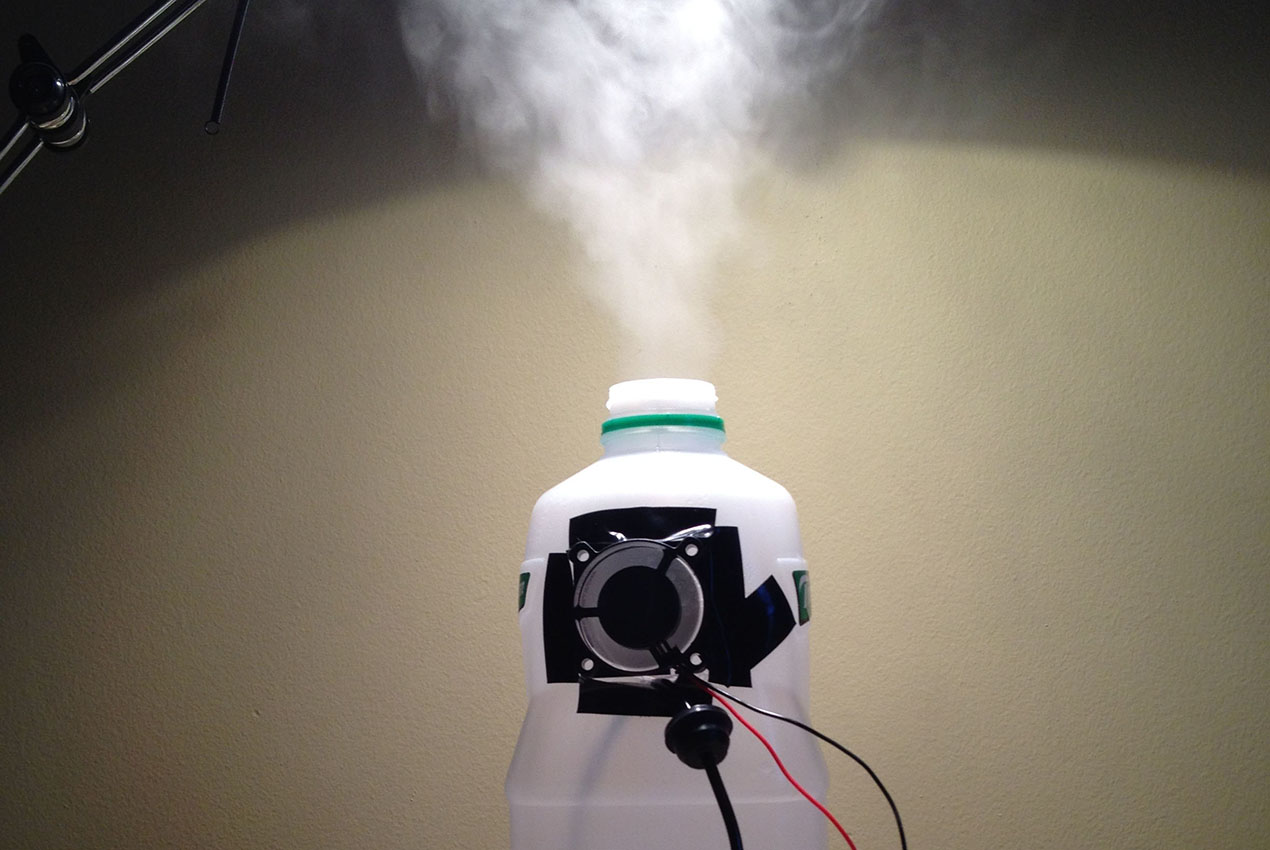Human health largely depends on the air quality that human breathes. Therefore, doctors strongly recommend walking often in parks, not near the highway. But if you spend most of your time at home, think about the indoor air quality.
To increase humidity levels, you can buy a humidifier or use budgetary folk methods to make homemade humidifiers that we covered in the article below.
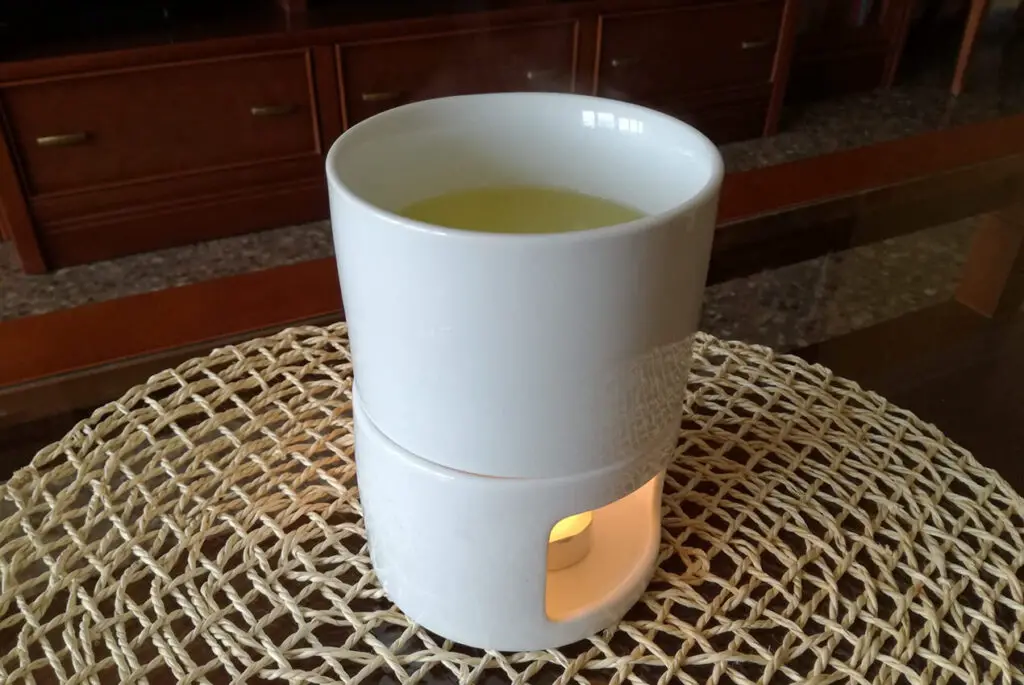
Why is dry air harmful and why is it necessary to humidify it
The mucous membranes dry out
There are unpleasant sensations in the throat, and perspiration, in children crusts, form in the sinuses, in adults, there are difficulties with wearing lenses – constant dryness is felt.
The risk of exacerbation of asthma and allergies increases
In case of a lack of all that moist air, more dust is formed in the room, so it becomes more difficult to breathe. Signs of allergic reactions can appear even in healthy people.

The number of viruses and bacteria is increasing
The necessary conditions are being created to increase the rate of their reproduction, which can cause various diseases, from SARS to coronavirus infection.
Feeling unwell
There may be increased fatigue, a persistent desire to sleep during the day, reduced attention, headaches, and other symptoms may occur.
A research project within the American program Wellbuilt for Wellbeing has shown that professionals working in an office with a moisture level below 30% cope with stressful situations and external irritants by 25%.
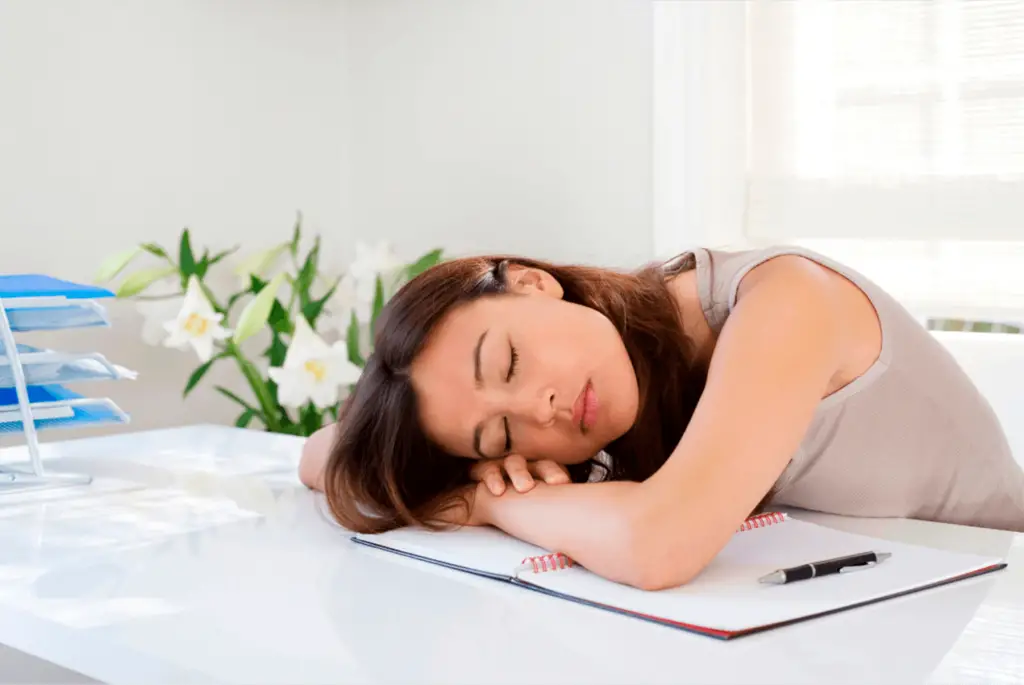
Dry skin problems appear
Lack of moisture in the air causes dryness and flaking of the skin, itchy skin, brittle nails, and deterioration of the hair.
Static electricity occurs
It is especially noticeable in winter, when, due to excessive dryness, things begin to “beat” with current, and hair becomes electrified.
The owners of indoor plants, solid wood doors, libraries, collectible art objects, rooms with parquet, furniture and wood panels, etc. should think about how to increase the humidity levels in the apartment.
The consequences of a lack of moisture can be described for a long time, but it is worth understanding as high humidity is undesirable, so everything should be in moderation.
According to the recommendations of the World Health Organization (WHO), a comfortable humidity level for humans is 40-60%.
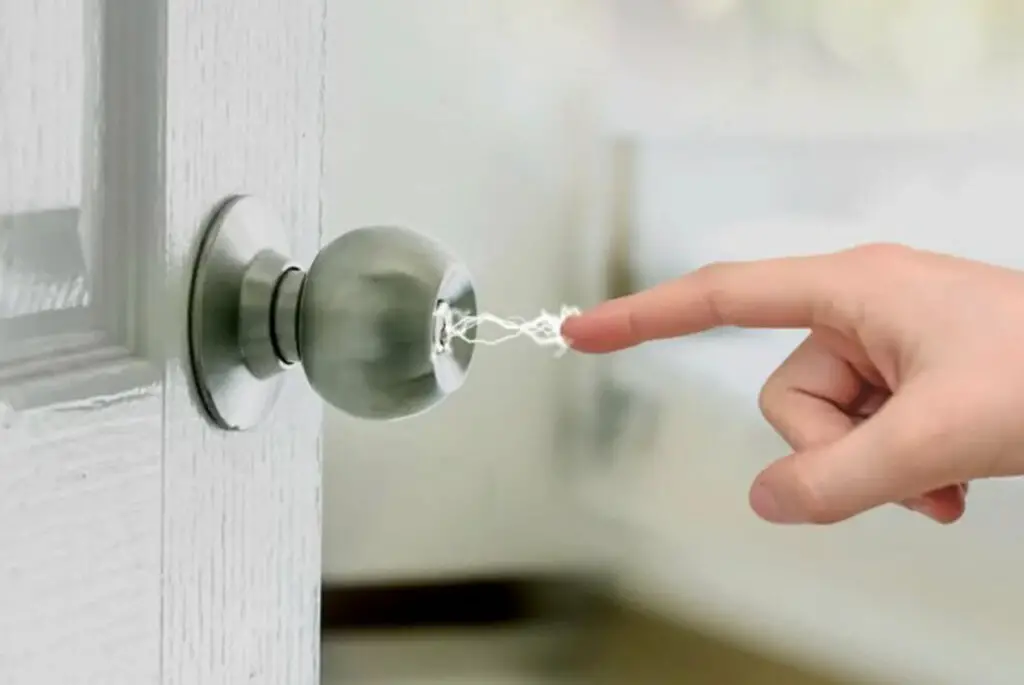
Additionally, read an article about air purification and humidification devices that create a healthier living environment and remove pollutants in the air.
How to understand that the apartment has a dry environment
Before you look for how to make a DIY humidifier, make sure that the room really does not have enough natural moisture. There are some great ways.
A glass (or water bottle) and a refrigerator
Pour cold water into the container or bowl, and put it in the refrigerator for 2-3 hours. Remove the container with water and leave it on the table for 5 minutes.
Then wait another 5 minutes, if there are almost no drops on the walls – the room has dry air, if a puddle appears – there is a lot of moisture, if the droplets flow smoothly along the walls – everything is fine, no measures are required.
I also recommend reading: Why is my humidifier spitting out water and how to deal with it?

Fir cone
Bring a closed spruce cone and put it on the coffee table. If after a week the scales open completely – the house is too dry, if they remain in the same position as they were, then you should not worry about how to humidify the dry air in the apartment, if they shrink more tightly – you need to think about removing excess moisture.
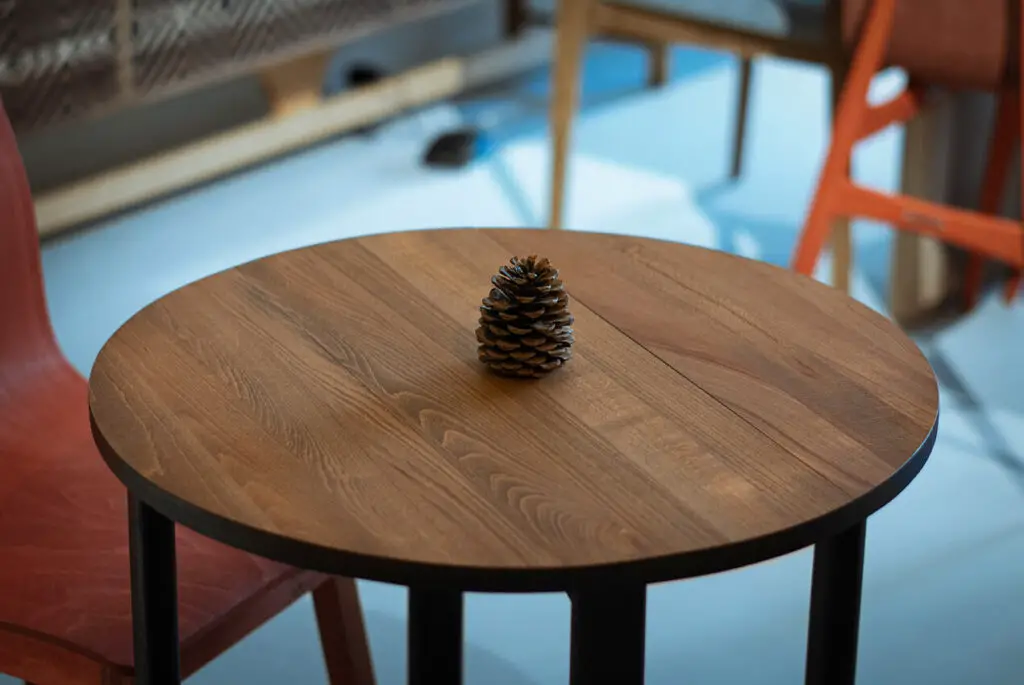
Hygrometer
The first specialized device for measuring humidity levels was invented by Leonardo da Vinci in 1400, but this device did not perform well. Modern models of hygrometers allow you to obtain the most accurate data with minimum error.
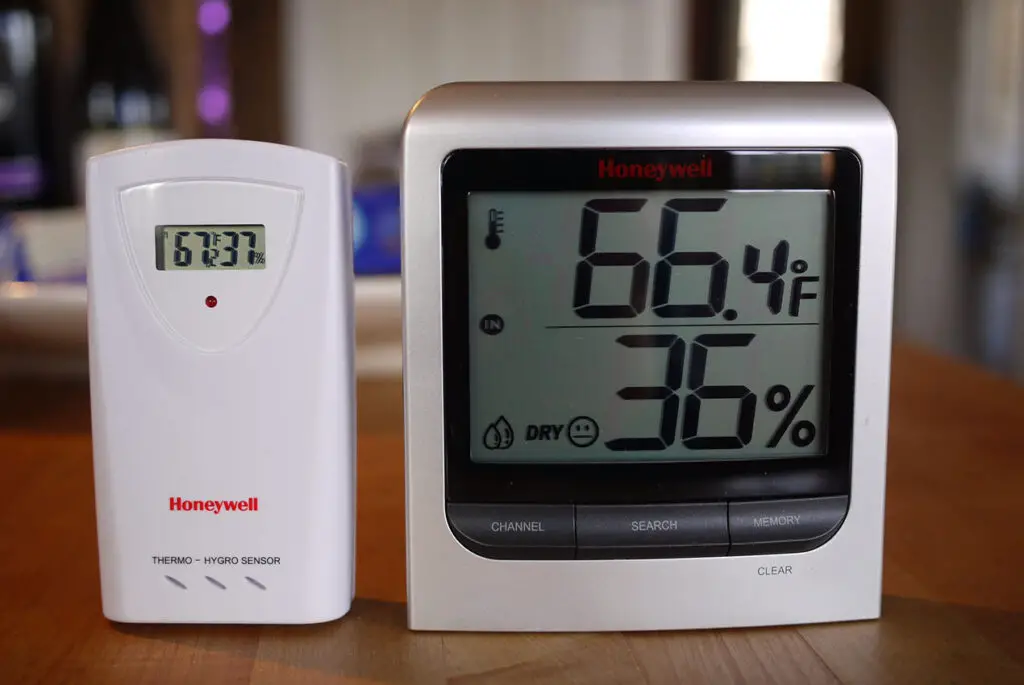
How to make a homemade humidifier: what is an alternative?
How to increase the indoor relative humidity level without a humidifier? We present 5 effective ways of a natural humidifier, proven in practice. Let’s just say that there is no ventilation among these methods.
You can often find advice on the forums: open the windows in winter, and then the humidity level will rise. It is not true.
This method not only does not help, but it also nullifies all your efforts to humidify the air in the adjacent room. The reason is that at negative temperatures the absolute humidity is lower, as soon as fresh air enters a warm room, it heats up and the relative humidity drops sharply.
The humidity levels can drop to a critically low 20%, and sometimes even 10% (against the minimum low humidity rate of 30%). In rainy weather, in summer, spring and autumn, it is really worth airing, as at this time heat and a large amount of air moist in the atmosphere are combined.
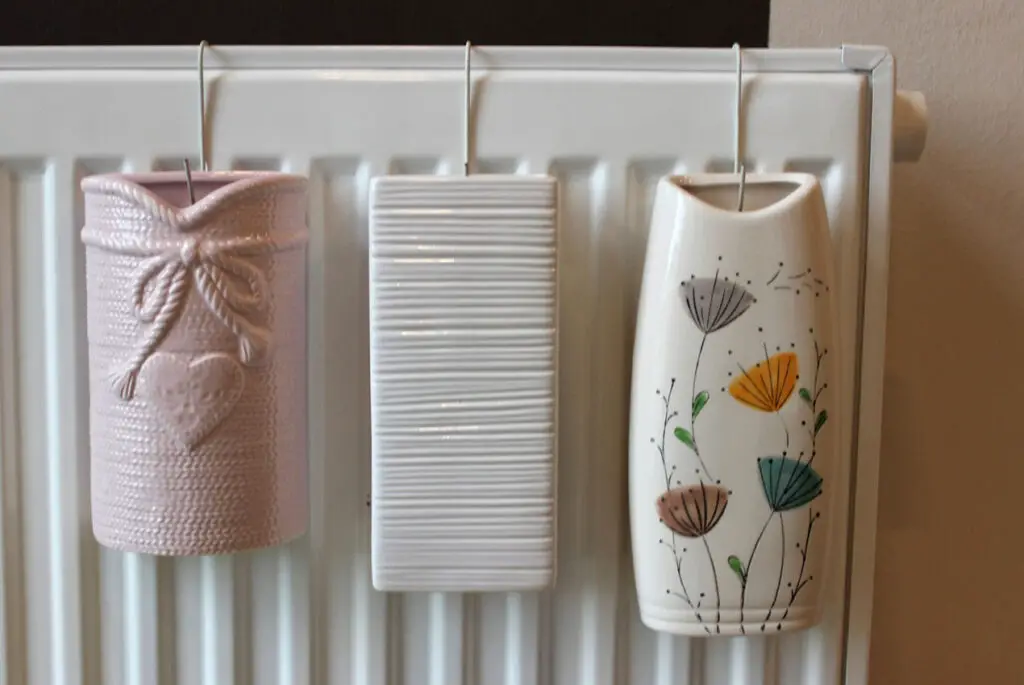
Will a bowl of water humidify a room?
Yes, the easiest way to humidify a room is with an ordinary water container, which can be placed on the floor, on the windowsill, or near the heating vents.
When heated, the water will slowly evaporate, moistening the air in the room, and all that is required of you is to periodically replenish its supplies.
You can use simple ceramic or metal bowls with water and heat them with the candle warmer.
Another little secret is to add a few drops of your favorite essential oil to the water, and your homemade humidifier will also act as a fragrance.

DIY humidifier from plastic bottles
Our grandmothers knew a simple and easy way to add moisture: it was enough to hang wet towels or make a sponge humidifier.
Alternative method: hang your laundry on the drying rack in the room, not outside. Although both approaches have certain drawbacks: you will have to wash clothes often and constantly wet towels because they dry out quickly.
You can make your own homemade humidifier from improvised gear: you will need a plastic bottle from fizzy drinks with a tightly screwed cap, cotton cloth, sponge wick, and adhesive tape.
Cut a small hole in the side of the bottle, attach it in a convenient place to the radiator pipe and fill a quarter with water, lower one cloth wick inside, and wrap the other along the pipe. The boiling water will rise up the fabric and evaporate as it dries.
If aesthetics are important to you, you can decorate the bottle beautifully or use special humidifiers for heat sources.
Water is poured into such containers (a drop of essential oils can be added for aroma), then they are hung with a special mount on heater vents. Due to the high temperature, the liquid constantly evaporates, increasing the humidity in the room.
There are different options in shape, cost, appearance, and material, most often in stores, you can find ceramic and plastic ones. Depending on the evaporation area, one radiator may require from one to three such tanks.
Since tap water can leave limescale deposits or traces of rust on the walls, it is better to fill in the filtered liquid and clean the containers regularly (at least once a month).
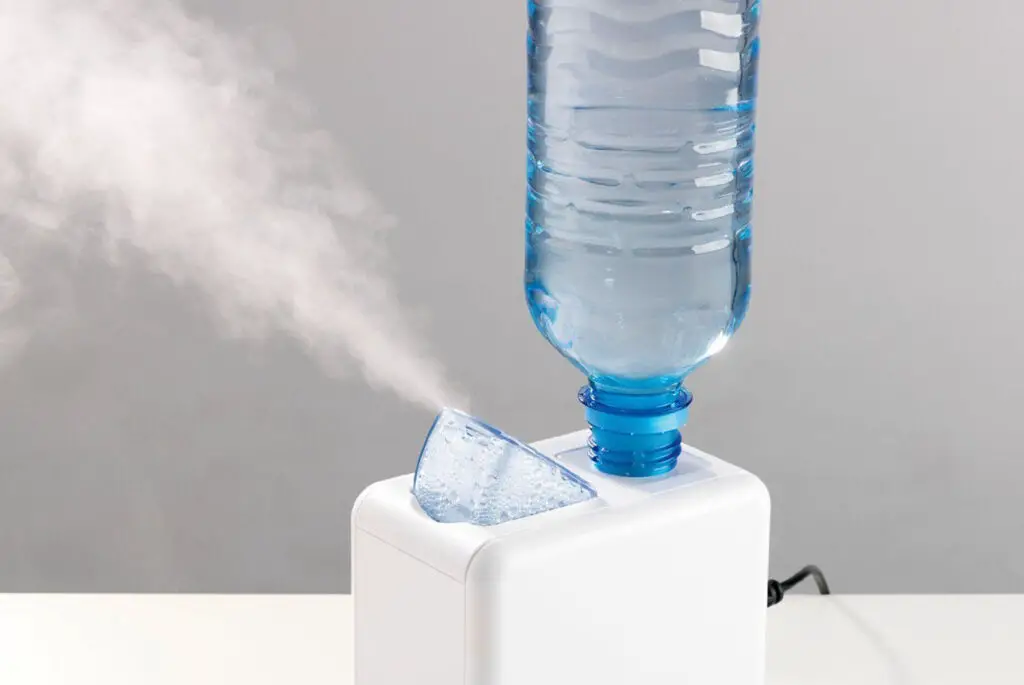
DIY humidifiers from trash cans
Making a homemade humidifier out of a recycling bin will be more difficult than a plastic bottle and plastic bag, but it is also a popular and practical option. For the basis, you should follow a few easy steps and take such materials:
- Two small bins and two larger bins
- You will also need a bucket with a capacity of at least 12 liters
- Aquarium pump
- Computer cooler
- Plastic ties for fixing parts
First, you need to connect 2 small baskets together. This must be done in such a way that the bottom of one of them remains on the floor, and the bottom of the other is directed upwards. In this case, fastenings will be made according to the diameter of the upper rings of the baskets.
The resulting part is placed in a larger basket, covered with a second one of the same size on top, and the large baskets are connected to each other according to the same principle.
Then you need to make a hole in the upper basket in order to fill the expanded clay inside. So that it does not wake up in a hole in the basket, expanded clay should be medium or large.
The resulting device is placed in a bucket, where you put an aquarium pump, the pipes of which should be carried out to the very top.
The final step is to install a computer cooler at the very top of the device, which will act on the wet expanded clay, ensuring that air enters its walls.
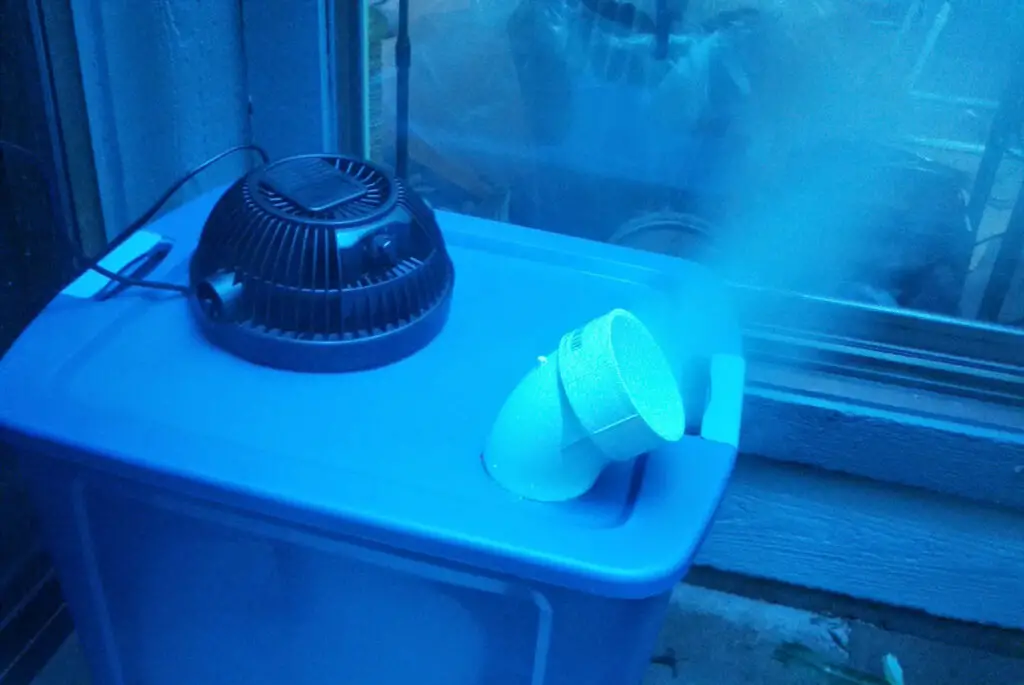
Hydrogel bowls
If you don’t want to place cups all over the apartment, hang linen or hang unaesthetic bottles, try using hydrogel – flower growers usually use this decorative soil.
A feature of the polymer in the form of colored balls is the ability to absorb up to two liters of water per ten grams of the hydrogel.
It is not necessary to plant herbs in them, hydrogel vases can be used as a beautiful interior decoration. Such a homemade humidifier works only if there is moisture in them, so do not forget to add clean water constantly; otherwise, there will be nothing to evaporate.
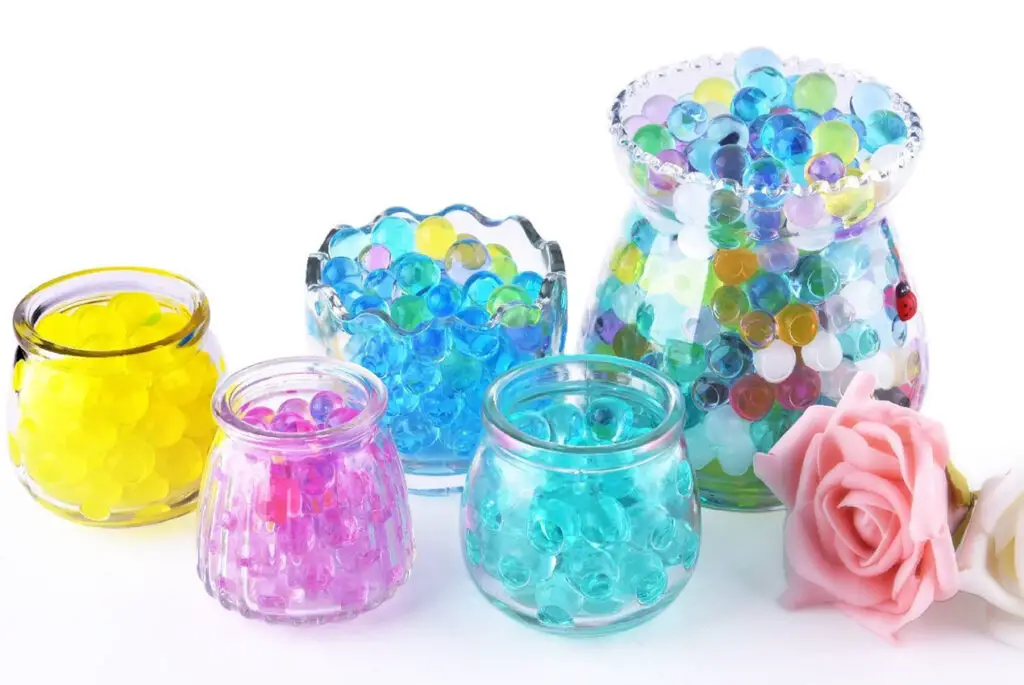
By the way, planting more plants can also be used if you do not have allergies: 99% of their moisture evaporates through the ground part.
It is the natural process called transpiration. Choose moisture-loving varieties with wide leaves, then the evaporation area will be higher.
A good effect will give:
Monstera – a large plant with large leaves, is ideal for solving the problem of adding moisture to the surrounding space.
Nephrolepis – “home fern” not only actively evaporates water but also signals its deficiency by changing color to grayish-white.
Spathiphyllum – “female happiness” is distinguished by a large area of leaves; therefore it is also suitable for adding moisture purposes. With a lack of water, the leaves become soft, and then completely fade.
Tradescantia – its leaves can reach 6 inches in length, which significantly increases the water vapor.
Ficus, cyperus, spa mania, fatsia, philodendron, hibiscus, and dracaena also release moisture into the air perfectly.
Depending on the plant variety, you can water the ground, periodically pour water into the pan, spray regularly or apply drip irrigation.
The spray gun can be used both for spraying plants and for curtains or spraying in the air. Just make sure that the drops do not leave marks on the upholstery, countertops, and other surfaces.
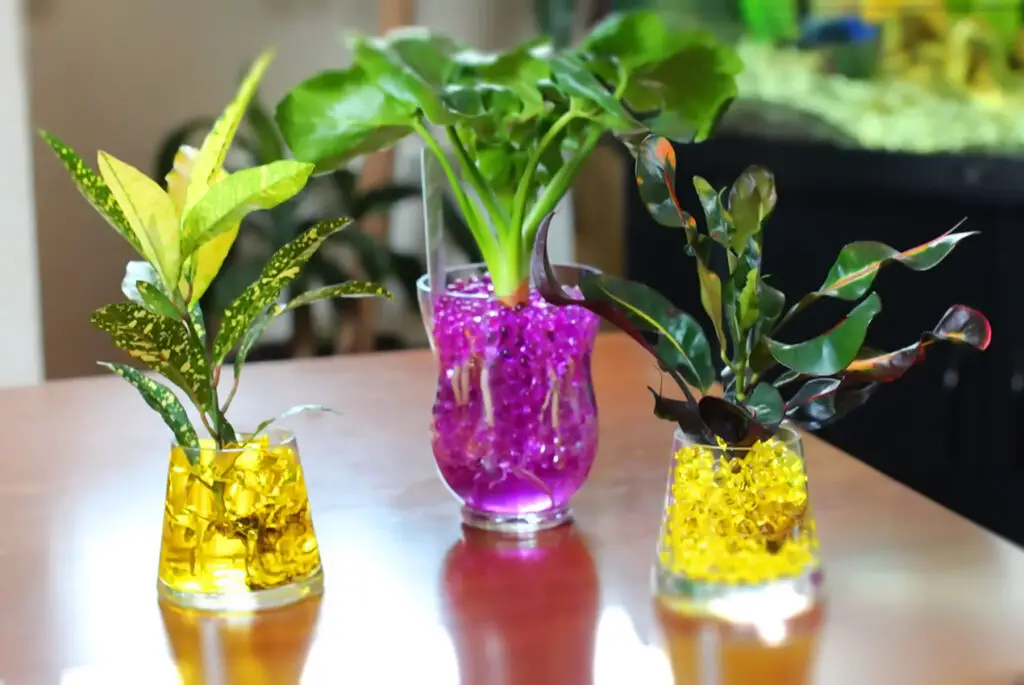
Aquariums and fountains
Fans of the fish tank or the murmur of a fountain should not worry about how to humidify the air in a room without a DIY humidifier.
The main thing is that the fish tank is open; otherwise, the water will not evaporate, and the fountain should be away from electrical appliances and outlets.
If you dream of decorating a children’s room or living room with an aquarium, but are not yet ready to buy fish and do not want to take care of them, pay attention to shrimps and herbalists (with fresh flowers).
Another interesting option is an aqua farm, thanks to an enclosed ecosystem. It requires minimal maintenance, and the water is purified by indoor plants.
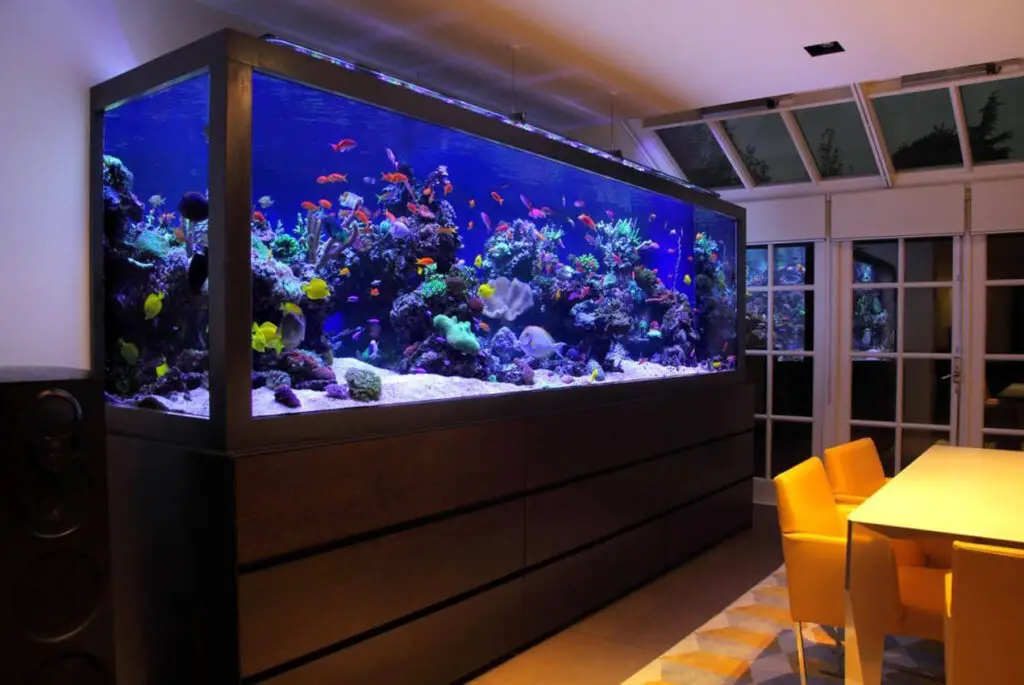
Wet cleaning
This method is not much, but it will increase the humidity inside and at the same time allow you to get rid of some of the allergens, microbes, and dust mites, although not as effective as a cleaner-disinfector.
Regular cleaning can be used in combination with other methods described in this article to improve the effect.
Yale University scientists have found that dry air provides more favorable conditions for the spread of Covid-19 and acute respiratory viral infections than humid air, while the body most successfully resists the virus while maintaining 50% humidity inside.
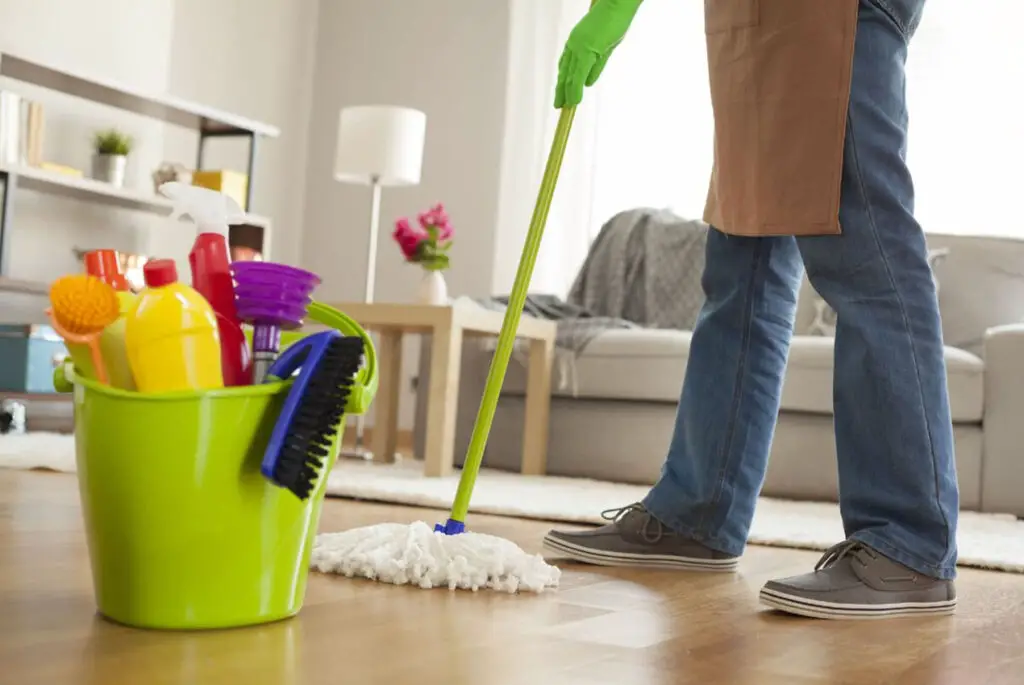
Steam cooking
Another method to add humidity in a room without a DIY humidifier is to change the cooking technology.
Dishes cooked in the oven air dry, while steaming cutlets, slow stews on the stove, and boiling soups, on the contrary, help to release moisture into the air.
You can simply put a large pot or another deep dish on a slow fire, boil water, or add citrus peels, cinnamon or any other pleasant flavoring, evaporation process will gradually increase the humidity.
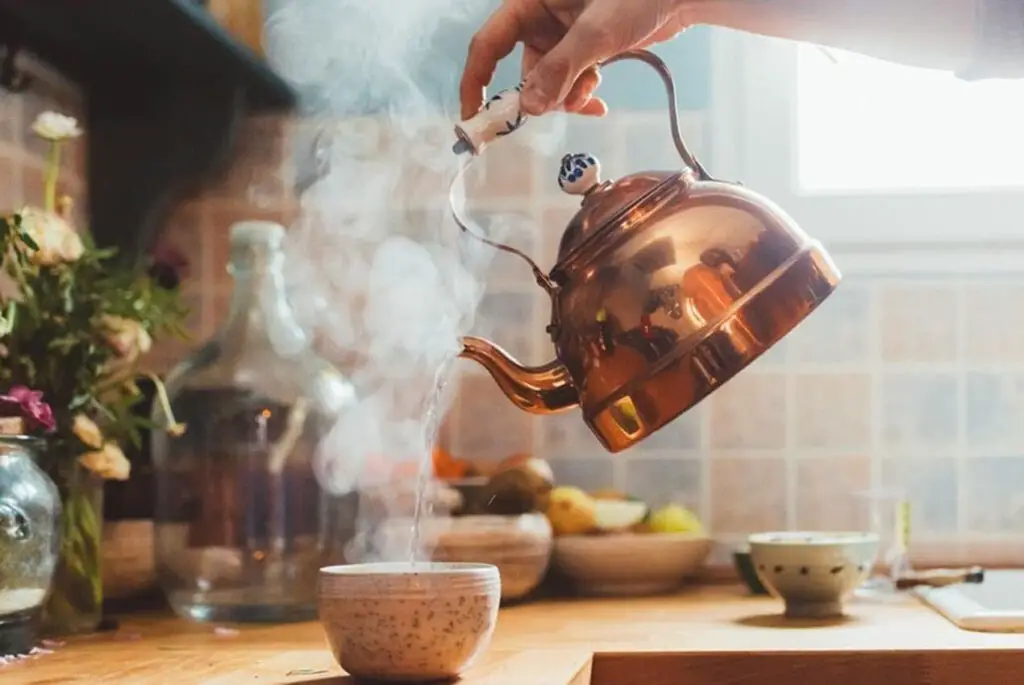
Sometimes it is recommended to replace a new electric kettle with a regular one, as it boils longer, and as a result, it releases more moisture into the air. When using such tips, keep in mind that due to hot steam, wallpaper and veneered facades can peel off and the finish as a whole can deteriorate.
Not only the kitchen can add moisture to the air, but also the bathroom, which can have a high humidity level of 80% after the steamy shower. Just leave the bathroom door open after taking a warm bath or hot shower and ensure the bathroom vent is off.
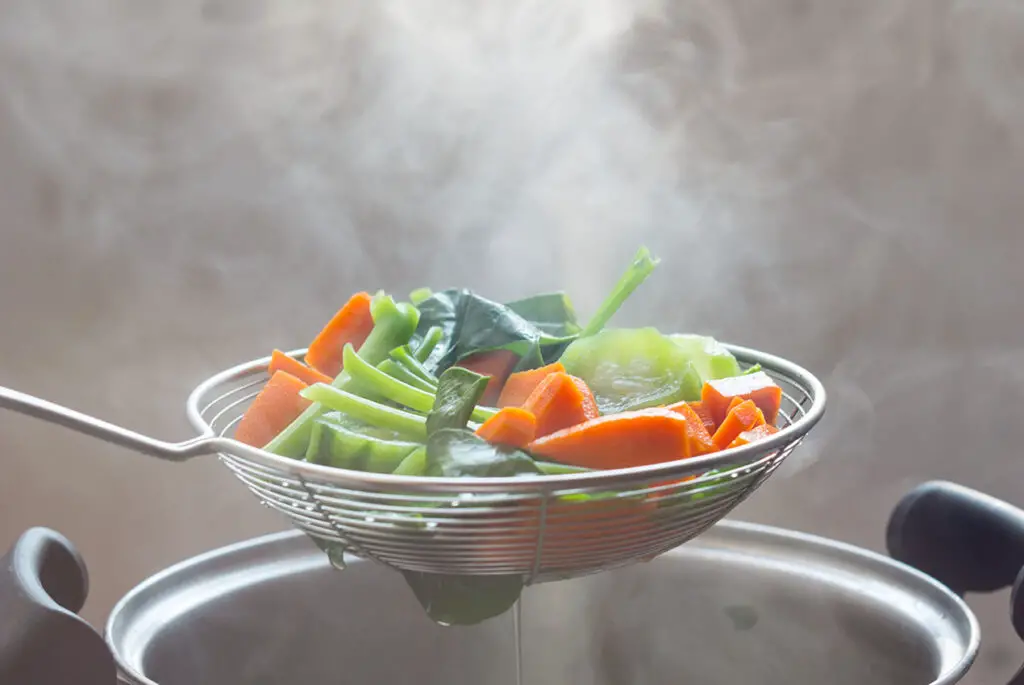
Types of humidifiers
If, while reading the article, you realized that it is better to purchase a store-bought humidifier and not suffer from bottles, fountains, and pots, you can choose a model with one of three principles of operation:
Traditional – water evaporates naturally (liquid poured into the tank wets special filters or cartridges, and the fan blows surrounding air naturally out of the room through them). The intensity of water evaporation is controlled automatically.
Steam – unlike the previous version, the water is first heated and then evaporated. Customers complain that some humidifiers are noisy, and have a negative effect on plants.
Ultrasonic – water is broken into micromolecules due to the presence of an ultrasonic membrane in the design and sprayed in the form of a mist using a built-in fan.
I also recommend reading Salt in humidifier: when can I put it and how?
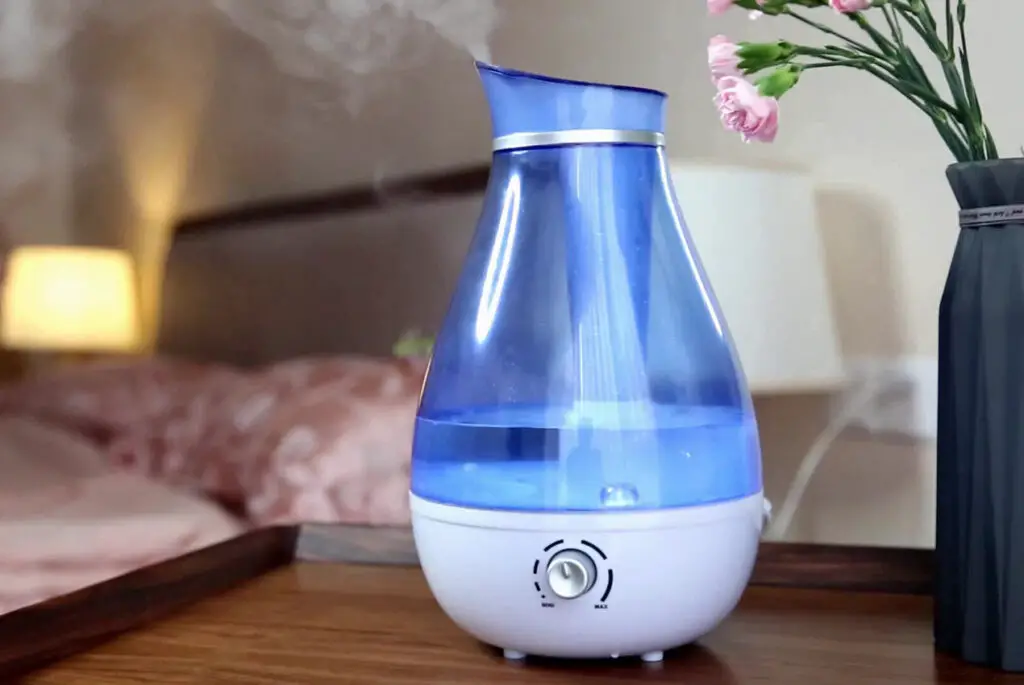
Conclusion
We talked about different options for how to humidify the room air, use the one that you like best, and that requires less labor from you. Be careful, and follow the safety precautions for working with electricity, so as not to harm yourself and others.

